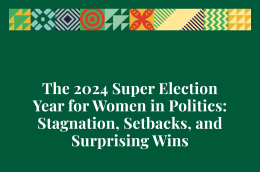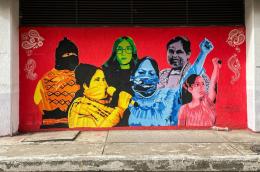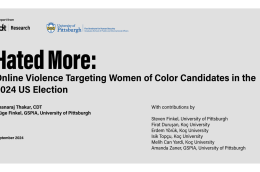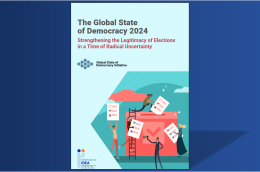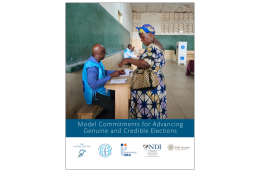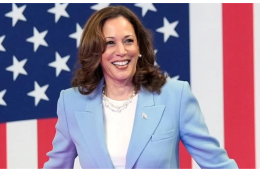Elections
Main navigation
For much of her political life, Simone Gbagbo has been known as the combative partner of Côte d’Ivoire’s former president, Laurent Gbagbo. Her sharp rhetoric earned her the nickname “The Iron Lady.” Now, the onetime first lady is charting her own course.
Côte d’Ivoire’s Constitutional Council cleared Gbagbo to run in October’s presidential election, making her one of two women on the ballot in a race long dominated by men. Her candidacy carries weight beyond her party base in a country where just 13.4 percent of lawmakers are women. Her entry into the field is described as both politically consequential and symbolically resonant.
Full article here.
Since April 2024, UNIEAT has delivered 38 BRIDGE training workshops nationwide, in all ten States and the Greater Pibor Administrative Area, to 1,003 participants (637 men and 366 women) representing the National Elections Commission (NEC), State High Election Committees (SHECs), State-level government authorities, women organizations, youth groups, disability persons organizations and media. The workshops, supported by the United Nations Integrated Electoral Assistance Team (UN IEAT), covered topics including Introduction to Electoral Administration, Building Institutional Excellence in Elections, Civic and Voter Education, Operational Planning, Gender Equality, Violence Against Women in Elections, Access to Electoral Processes, Boundary Delimitation and Voter Registration.
BRIDGE (Building Resources in Democracy, Governance and Elections) is an internationally renowned election training curriculum which draws on comparative examples from different countries on all aspects of electoral administration using 17 training modules.
The program stands out for its participatory methods, focusing on inclusion and engagement. Sessions are designed to be practical and interactive, with group work, role plays and energizers to keep everyone involved. The program successfully developed a cadre of 19 South Sudanese facilitators by a group of accrediting workshop facilitators. Of those, 6 facilitators were awarded BRIDGE certification after completing a minimum of 30 hours of module workshop facilitation, placing them as the first cohort of BRIDGE accredited trainers in the country.
Introduction
In several countries, including in Venezuela, El Salvador, Thailand, and Tunisia, electoral contests were indeed manipulated by incumbents to further entrench their power. But the global picture was not uniformly negative. Whether in Sri Lanka, Bangladesh, Senegal, or Guatemala, citizens mobilized from below to push back against executive overreach and bad governance. Although far-right leaders and parties made gains in several Western democracies, including in Austria, France, Germany, Portugal, and the United States, this same pattern was not evident in many other parts of the world, where politics were shaped by other issues and cleavages.
Despite these varied political outcomes, the past year’s record number of elections brought no uptick in women’s political representation. Globally, women’s parliamentary representation and the number of countries led by women failed to increase.
The barriers to reaching gender parity in politics are mounting, from continuing democratic erosion and rising ethno-nationalism to a widening pushback against progressive gender norms in different parts of the world. Yet looking beyond global and regional averages also reveals surprising bright spots. In countries as diverse as Mongolia, Sri Lanka, and the United Kingdom, more women are serving in political office than ever before. Several countries elected their first-ever female presidents, including Mexico and Namibia.
This report analyzes advances and setbacks in women’s political representation in 2024, building on the mid-year assessment published by the Colmena Fund for Women’s Political Power in October. It begins by examining global trend lines in women’s parliamentary and executive representation, highlighting both progress and backsliding. It then turns to four countries that held significant elections over the past year and interrogates their impact on women’s political power: the Dominican Republic, India, South Africa, and Sri Lanka. To close, the analysis draws attention to several broader themes that emerged from the electoral contests of the past year.
Women have been urged not to take back seats but participate actively in shaping politics in 2027. Women empowerment advocate and entrepreneur, Mrs. Omolara Kafilat Svenson Busari; Oyo State All Progressives Congress (APC) Women Leader, Alhaja Tinuade Adigun; the APC Women Leader in Egbeda local council of the state, Aderonke Adedeji, made the call during the third edition of the Women in Politics Sensitisation programme in Ibadan, Oyo State capital.
The initiative, themed, “Understanding Our Role in Active Politics”, was spearheaded by Mrs. Busari. The programme was a rallying call to empower women, dismantle long-standing barriers, cultivate leadership, and foster inclusive governance.
In her keynote address, Busari decried the continued under-representation of women in Nigeria’s political landscape, particularly in Oyo State. She emphasised that the marginalisation of women in decision-making roles is a critical factor stalling national development.
A record number of 42 female candidates were elected in Sunday’s Upper House election, marking a step forward for gender representation in Japan’s political landscape. Women won 33.6% of the 125 Upper House seats contested on Sunday, up from 35 seats in the last election in 2022.
Among the notable winners was a Democratic Party for the People (DPP) newcomer, Mayu Ushida. The 40-year-old former NHK newsreader won a seat in the highly competitive Tokyo district in which 32 candidates vied for seven seats.
“In the course of my campaign, especially since the middle of the election period, I have heard many voices from young women, students and young men — some who are 18 years old and just got the right to vote,” she said. “I really felt how anxious many of the young working generation are about their future, and felt their strong desire for something to be done.”
Full article available here.
Posters with the picture of a young woman wearing a faint smile, and her educational qualifications highlighted in bold red, are plastered across the village of Jheepa in Uttarakhand’s Almora district. Though at first glance it looks like any other poster, the message behind the absence of a man in the frame is not lost on anyone.
Sunita Devi, 32, is vying to become the gram pradhan of Jheepa, which votes in the second phase of the panchayat elections on July 28. She is the president of a women’s group called the Rachnatmak Mahila Manch that has thrown its hat in the ring for the first time since its inception in 2013, pledging to abolish the practice of “pradhan pati (husbands of elected women officials running the show as their proxies)”.
The decision to take the electoral plunge was taken at a cluster-level leader meeting of the nine “shram sakhis” — heads of the 11 clusters falling under the group — on Panchayati Raj Diwas on April 24, following which candidate selection was conducted in village-level meetings.
Full article available here.


